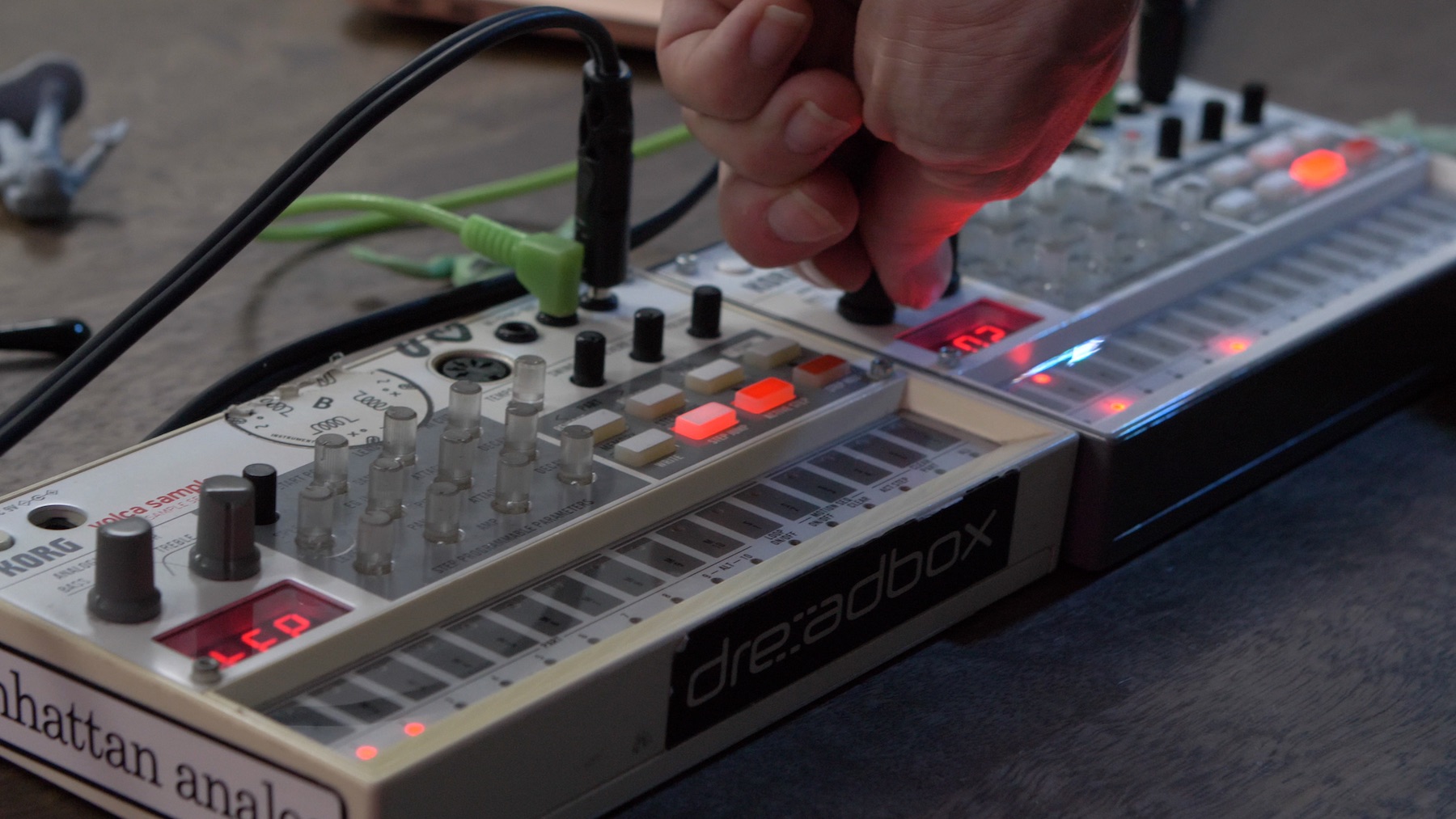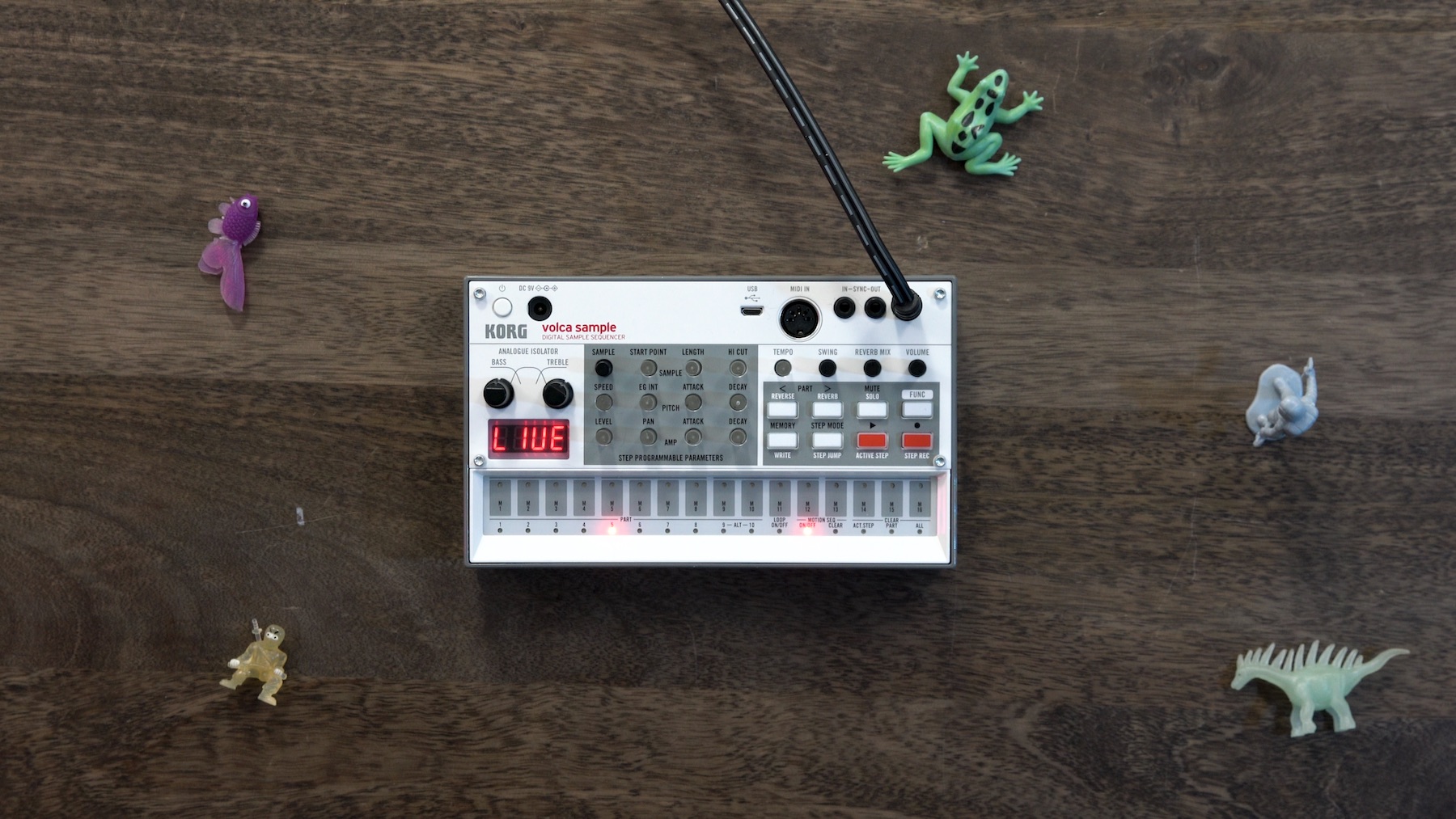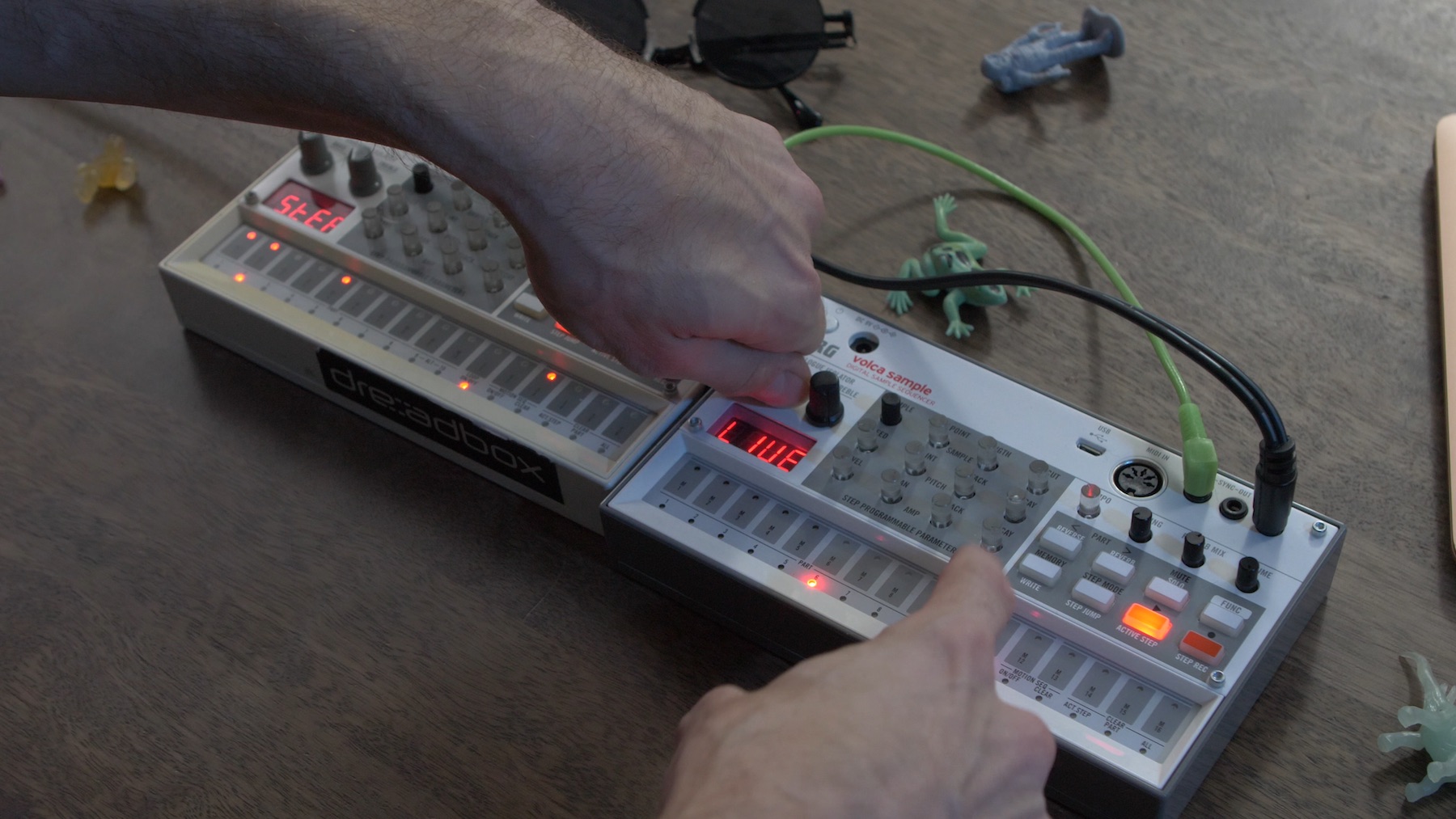Out of the extensive and still growing Volca series by Korg, the Volca Sample, now on its second version, is one that is particularly favored by many. Like the other pocket-sized Volca instruments, Volca Sample holds a great number of creative features that are perfectly accompanied by the cleverly thought-out and intuitive workflow. The sample-based nature of the instrument enables it to have a diverse and flexible sonic palette, as it can be highly personalized by the user. It can be as easily used as a drum machine as it can be several monophonic synthesizers or a single eight-voice polysynth—and everything in between.
In the video above, our pal Wes shares his personal story with the instrument, emphasizing the emotional attachment he developed with it. We are certain that Wes is not the only musician who has this sentiment with the Volca Sample, because surely for many folks out there, it became one of their first hardware instruments. But what makes Volca Sample truly amazing is that it remains singular and unique—regardless of one's gained experience and acquired instrument collection. In this article we are going to discuss why this is the case, and what makes Volca Sample such a special machine.
The Volca Revolution
Before we dive into discussing the Volca Sample itself, it feels appropriate to briefly talk about the Volca series as a whole, as it holds a unique position within the timeline of the evolution of electronic music. After more than a century of active developments in the field of electronic musical instruments, it is evident that certain inventions, for different reasons, can play a pivotal role in how music is created. Some offer brand new ways of creative self-expression through sound, while others are game-changing in terms of accessibility and reach of such tools.
However, this is not quite as straightforward as simply offering a novel way of creating electronic sounds or making something cheap, but rather a very well-tuned constellation of occurrences that makes a musical instrument go from merely "new" to "groundbreaking." When Korg launched their Volca series in 2013 with Volca Keys, Volca Beats, and Volca Bass, it was one of these cases. The instruments were an instant hit, and if you played live electronic music at the time, you saw these machines popping up at almost every gig. Volca devices, by no means, are meant to be the most advanced instruments, but they are special, and even revolutionary for several other reasons.

First of all, the launch of the series coincided with the resurgence of interest in hardware synthesizers. All three of the initially available models were digitally-controlled analog synthesizers, which was particularly appealing since analog sound was commonly associated with something expensive. This leads me to the second point—Volcas were and still are some of the most affordable synthesizers on the market, with most priced at under $200. Thirdly, the instruments are designed to be light and portable, which was a perfect fit for the then newly-forming concept of "studio is everywhere". Nearly all Volcas can be powered by batteries (except for Volca Mix), and all have a built-in speaker installed, so an artist doesn't have to be tied to their home studio to compose tracks, but can as easily do so on a lawn in the park. Volca instruments are also very easy to learn, as all devices in the series feature fundamentally similar workflows. Lastly, all Volcas are equipped with flexible I/Os to seamlessly interface with various electronic musical instruments and each other.
Although an uncommonly low price point and a miniaturized form factor may give some a false initial impression that Volcas are not oriented toward serious music-making, once the devices are put into action, the cloud of doubt instantly vaporizes. These are very original and quite capable instruments equipped with intuitive, performance-oriented interfaces and some very unique features. It is fair to say that by introducing the Volca series to the market, Korg made things significantly easier for people who wanted to pursue making electronic music with hardware.
Every Volca is different, and together they make up a very potent sonic ecosystem. However, if one has to start somewhere, Volca Sample is probably the best choice for many because it can be used as a complete groovebox, at the same time taking care of rhythmic, tonal, and textural elements of a track.
Volca Sample: The Best Affordable Groovebox
Initially released in 2015, Volca Sample was the first fully-digital instrument in the series. As the name of the device suggests, it is a sampler—a performance sampler, to be more accurate, or a sample-based groovebox. The instrument consists of two closely intertwined components: a sample player, and a sequencer. Importantly, Volca Sample is not intended for direct sampling of sound sources, but exclusively for manipulating, and sequencing recorded sounds.
The upper half of the instrument is dedicated to the global, sequencer-, and sampler-related parameter controls, while the bottom section features Volca's signature sixteen multi-purpose step buttons which are used for recording and editing sequences, selecting and muting parts, as well as engaging other creative functions like motion recording and looping. Up to ten sample tracks (parts) can be individually sequenced and played with on the Volca Sample, allowing for the construction of elaborate multi-part jams and songs.
To the left of the instrument's panel is an Analogue Isolator section which features a parameter-state display plus DJ-style master EQ with Bass and Treble controls—super handy for expressive transitions, and other performance tricks.
The middle section of the device is dedicated entirely to the sampler's parameters. There are three rows of knobs. The top row features core sample-manipulation controls including Sample for sample selection, Start Point, Length, and Hi Cut for rudimentary filtering. The middle row features pitch controls of the sound, including Speed, Attack/Decay times of the pitch envelope, and EG Int for the amount and direction of the modulation applied. The third row includes the Level, and Pan controls, as well as Attack/Decay time settings for the volume envelope.
The right side of the device features eight program buttons that can be used for a variety of functions including selecting, muting, and soloing parts, plus reverb effect send levels, reversing samples, changing sequencer playback modes, and saving/recalling patterns. At the top-right are also four global controls for Tempo, Swing, Reverb Mix, and output Volume.

The sequencer on Volca Sample is worth a dedicated mention, as it offers several advanced features, uncommon for devices in that range. Besides organizing samples across a 16-beat looping timeline, a user can also dynamically automate all of the sampler's controls via motion recording, and parameter locking, which was an update in version two.
Connectivity-wise, Volca Sample plays very well with other instruments. The device sports analog Sync In and Out ports, a 5-pin DIN MIDI In port, and a USB port (again, an updated feature).
Speaking of version differences—Volca Sample 2 was released in 2021, and it hosts many improvements over the original, many of which are direct answers to the popular demand of V1 users. More streamlined management of audio samples via an added USB port is one of them, as well as expanded memory, and advanced functions such as pattern chaining, Step Jump (something of an arpeggiator), and Start Delay (adds a delay to the start of a sample for more nuanced fluid grooves).
Limitations Are Power
Of course, there are reasons why Volcas are affordable. They do have many limitations, and Volca Sample 2 naturally can not have the same features or capabilities as, for example, Korg's Electribe. But thankfully, it doesn't have to—it can still be an amazing instrument in its own right. When limitations are approached by the designer with creative considerations, they can be transformed into features. It feels like the folks at Korg know how to do this pretty well, and Volca Sample expresses their ability to do so.
The instrument is robust, but not overloaded with functions. This allows a user to quickly develop their own personal and instinctive workflow with the device, making it easy to freely perform without unnecessary overthinking or menu browsing. Furthermore, parameters that can have the most dramatic effects during the performance are within reach at all times. The instrument is great at keeping its users inspired, and in the zone.
Volca Sample plays back audio at a reduced 12-bit, 31.25kHz. The downsampling happens automatically when the file is transferred to the Librarian software. While this sub-optimal sampling rate could be an issue in many situations, within this instrument it is transformed into a character-defining trait, contributing to Volca Sample's recognizable crunch. Needless to say, it is particularly fitting for different types of lo-fi-oriented production, but is not limited to that by any means.
A Few Volca Sample Hacks
If there is one thing that I would like to convey with this article, it is that Volca Sample is much more than the sum of its parts, and the instrument's ingenious design allows one to discover many creative tricks for music and sound production, much more than what is evident at a first glance.
For example, in the video, Wes discusses his way of emulating a delay effect on the Volca Sample. To do so, he engages the loop function of the sample, sets the length of the sample to mimic the desired delay time, and adjusts the volume envelope Decay parameter which serves here a similar function as the feedback amount.

Speaking of the loop function, it is also a great tool for creating tonal sounds. One can make an oscillator out of any audio sample, simply by making the length of the loop very short. As I've mentioned at the beginning of this article, one can load the same waveform then on several tracks to fashion something of a polysynth.
Another useful hack entails loading a longer sample file into a track and then sequencing the Start Point to play back different sections of the file. This technique can be very useful for chopping up breaks, pseudo-granular effects, or for using a single track for a whole drum kit.
Small Yet Mighty
With such a wealth of functions, features, and a distinctive sound, Volca Sample sets the bar pretty high for similar instruments in its range. More so, certain aspects of the instrument are so unique and well-done that it outshines even some instruments in the higher price range. It is powerful, inspiring, and super compact. What more could one ask for?











